The word "scene" is usually associated with regional punk movements, commonly based around large urban centers.
Don't wanna be here? Send us removal request.
Photo
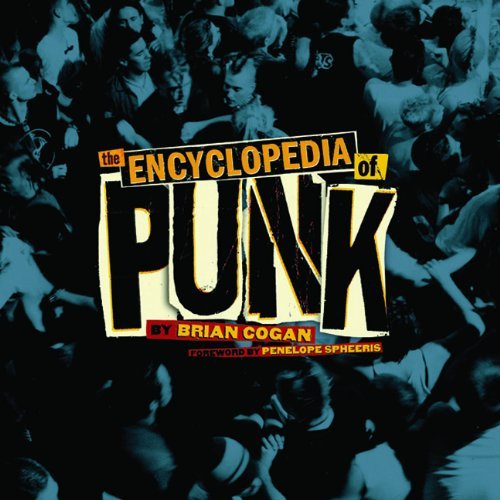
First things first, this Tumblr blog is strictly for academic, musical, and educational purposes only. This blog is a project for my Digital Media class at college. The topic that I chose was an art movement but not just any art movement, I chose the “punk” movement. In particular, I chose the “punk” movement from the mecca and hub of the cultural world that is New York City. My academic source is The Encyclopedia of Punk (2006) by Brian Cogan, which is pictured above and is an extremely recommended read. Everyone you can name from The Velvet Underground to The Ramones to Patti Smith is included with famous clubs, labels, genres, zines, and more. I really enjoyed doing this assignment especially on a subject that I am highly interested in. I hope you enjoy reading up on the ‘New York City Punk Scene’ and educate yourself on a really great yet sometimes misunderstood genre of music. To begin I suggest you start reading from the bottom of the page... and GO! Special Thanks: NJCU, Media Arts Department, Professor Mike DiFeo, my Digital Media class, author Brian Cogan, the people of New York City, and every musician, artist, writer, person who is included in this blog. Well let’s not forget... punk music!
https://journalism.nyu.edu/about-us/profile/brian-cogan/
#njcu#mediaarts#digitalmedia#finalproject#tumblr#blog#photoshop#assignment#art#movement#thevelvetunderground#theramones#pattismith#newyorkcity#punk#scene#briancogan#encyclopedia#quote#2006
0 notes
Photo
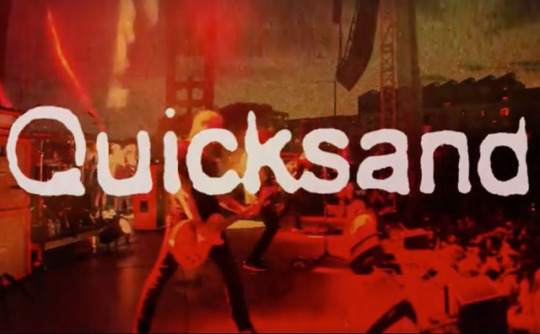
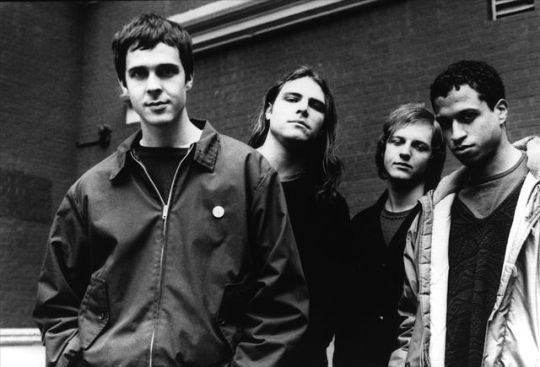
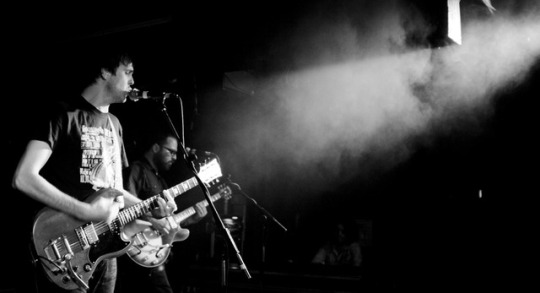
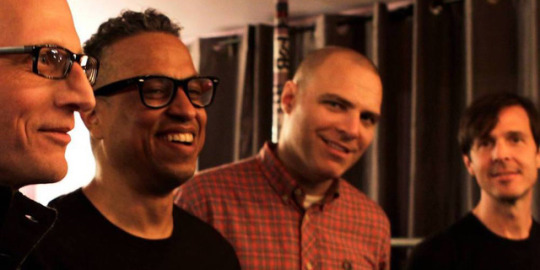
youtube
QUICKSAND
1990-1995, 1998, 2012-present
“Rising out of the rapidly dissolving New York hardcore scene in the late-1980s, experimental hardcore band Quicksand had solid punk bona fides, featuring former members of Gorilla Biscuits and Youth of Today. The band took a more innovative and melodic approach to punk than many of their former scene mates (some would later file Quicksand into the decidedly minuscule genre of post-hardcore). Guitarist Tom Capone (who also played in Bold and Shelter), laid down crunchy metallic riffs over which lead vocalist Walter Schreifels screamed out lyrics. Quicksand put out two highly acclaimed (but poor-selling) albums and an EP before they broke up in 1995. Although numerous bands were later influenced by them, Quicksand never had the impact that their raw, powerful sound deserved. The band reunited briefly for a 1998 North American tour alongside the Deftones and Snapcase, and thereafter, retreated into what appears to be a permanent state of dissolution; the members have since gone on to various side projects and reunions with their former bands.”
- Brian Cogan, The Encyclopedia of Punk, (2006)
#quicksand#walterschreifels#tomcapone#sergiovega#alancage#newyork#hardcore#scene#1980s#experimental#punk#gorillabiscuits#youthoftoday#innovative#melodic#posthardcore#bold#shelter#metallic#riffs#lyrics#1995#raw#powerful#1998#tour#deftones#snapcase#sideprojects#reunions
0 notes
Photo
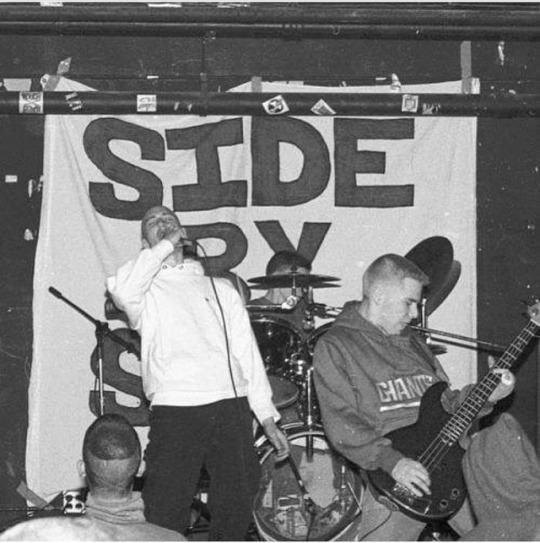

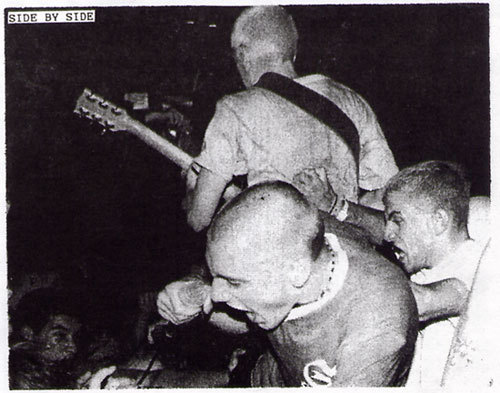
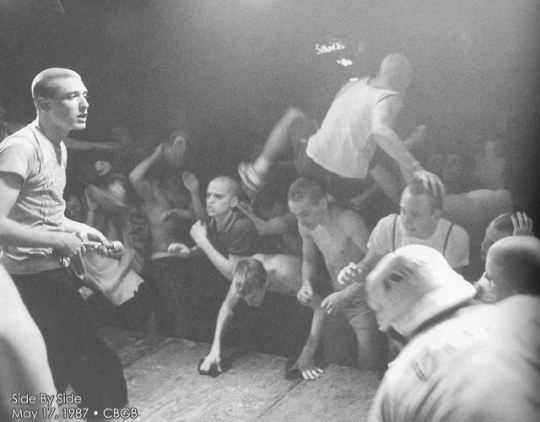
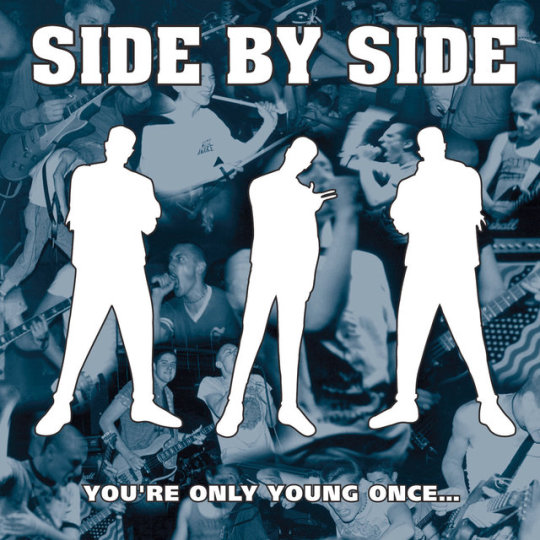
SIDE BY SIDE
1987-1990
“One of the many unheralded bands who soldiered on during the crucial years of the New York hardcore straight-edge scene in the late-1980s, Side by Side played alongside bands such as Youth of Today, although they were much less doctrinaire than most of that scene’s bands at the time. Although generally acknowledged as straight edge, they were somewhat reluctant to take on the movement’s mantle because of all the attendant baggage and presumed promises that accompanied such a label. Their music now sounds a bit dated, but still has some great moments that will bring any old New York hardcore straight-edge kid from the 1980s right back to the Pyramid Club on Avenue A. Side by Side recorded an EP and a full-length album for Revelation Records before hanging it up at the end of the decade. Following the demise of Side by Side, singer Jules Massey formed the band Alone in a Crowd.”
- Brian Cogan, The Encyclopedia of Punk, (2006)
#sidebyside#ericfink#alexbrown#billybitter#sammysiegler#newyork#hardcore#straightedge#scene#1980s#youthoftoday#movement#label#pyramidclub#avenuea#revelationrecords#aloneinacrowd#youreonlyyoungonce#1987#1990#briancogan#encyclopedia#quote#2006
0 notes
Photo
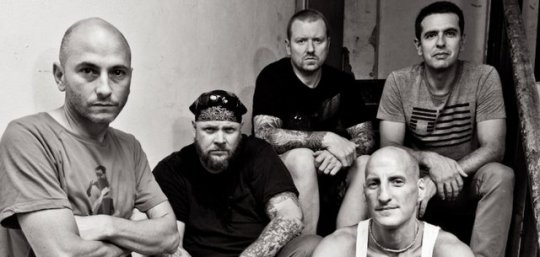
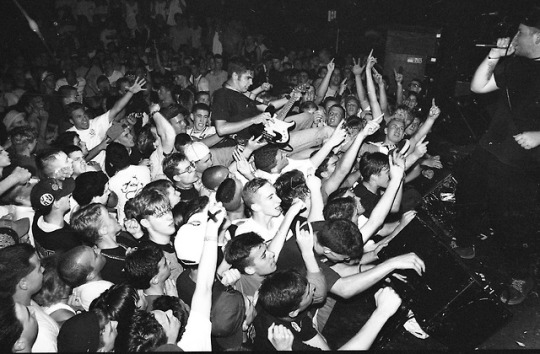
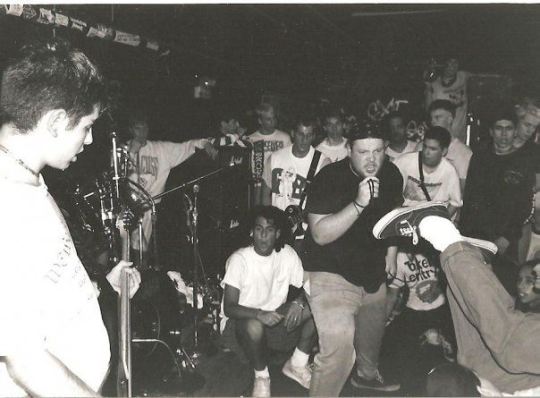
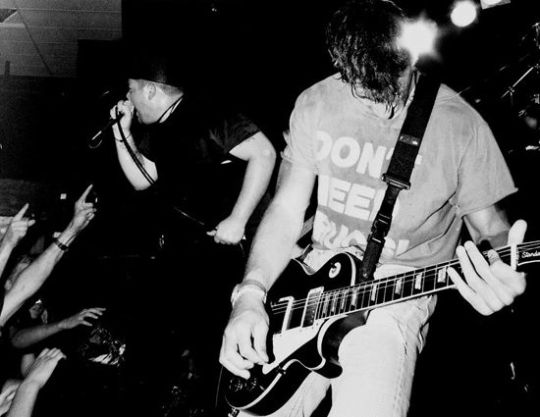
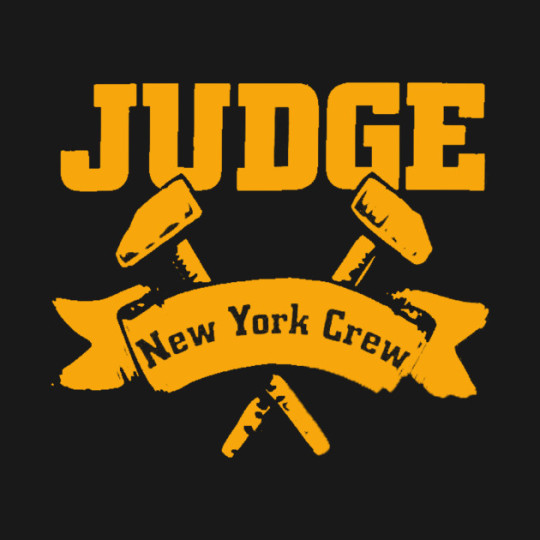
youtube
“I think maybe I took it a little too far on the first record. I made more enemies than I did friends.” - Mike Judge
JUDGE
1987-1991
“The prolific Mike Judge (Mike Ferraro), who formerly played drums with Youth of Today and Death Before Dishonor (who late became Supertouch), led this definitive New York straight-edge hardcore band. After touring with Youth of Today on Break Down the Walls tour, Judge decided that he would rather sing and express himself rather than remain hidden behind the drums. Judge started to collaborate with John Porcell of Youth of Today, Jimmy Yu of Death Before Dishonor on bass (later replaced by Matt Pincus), and Luke Abbey from Warzone (later replaced by Sammy Siegler). They released several records and became a major touring attraction. Even though Mike Judge was a militant straight-edge activist during that time period, he also took the name as an ironic joke on his own judgmental attitudes. Despite the goofiness of the name, Judge was an extremely confrontational straight-edge band, and Bringin’ it Down and No Apologies are ferocious records that still hold up. Judge broke up in 1991, after which Mike Judge formed an acoustic project called Mike Judge & Old Smoke.”
- Brian Cogan, The Encyclopedia of Punk, (2006)
#judge#mikejudge#mikeferraro#youthoftoday#deathbeforedishonor#supertouch#newyork#straightedge#hardcore#breakdownthewalls#tour#johnporcell#jimmyyu#mattpincus#warzone#sammysiegler#activist#joke#attitudes#bringinitdown#noapologies#1991#acoustic#oldsmoke#briancogan#encyclopedia#quote#2006
0 notes
Photo
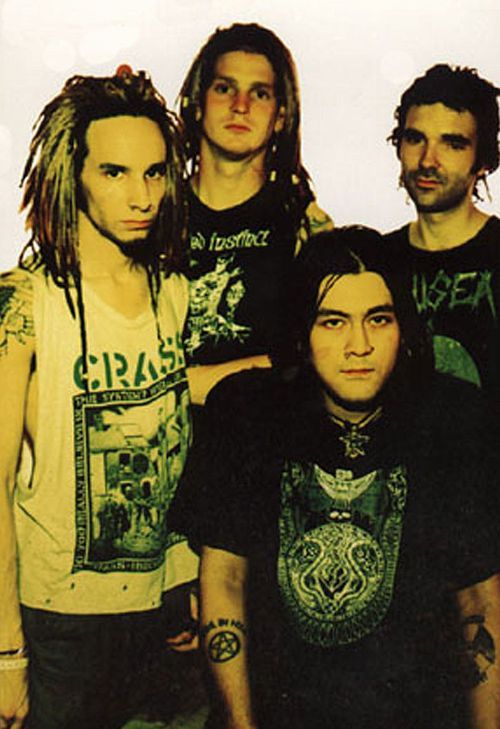
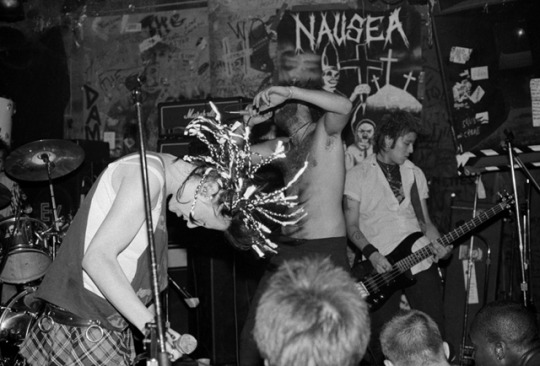
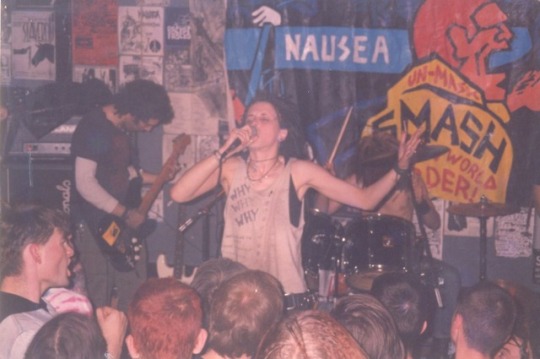
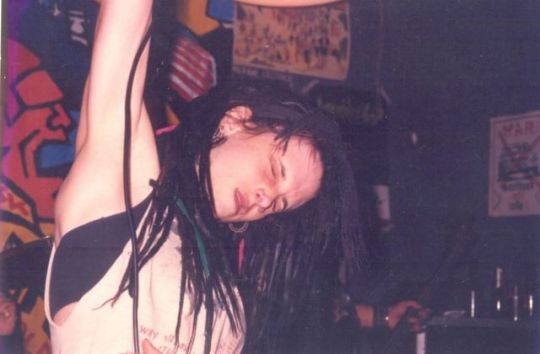
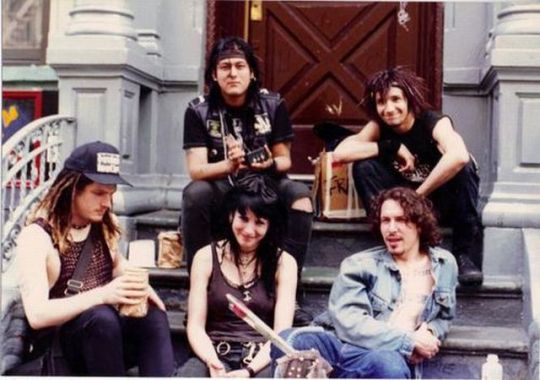
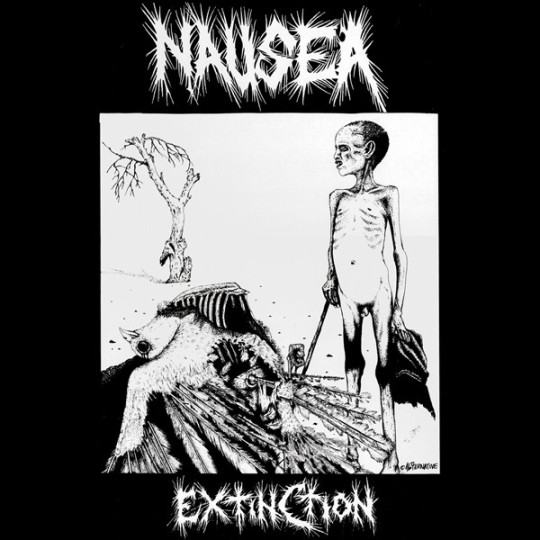
NAUSEA
1987-1992
“Nausea was a seething mass of tattooed anger and energy in the form of a punk band that was formed in New York’s Lower East Side by a variety of squatters in 1987. Their lineup was made up of vagrant-punk royalty, with ex-Reagan Youth bassist Victor Venom on guitar, Amy Miret (wife of Agnostic Front’s Roger Miret) on second vocals, and British singer, Neil Robinson, who also ran the Tribal War label and booked shows at the club ABC No Rio. Starting out as fairly normal punk band, Nausea changed their sound after Robinson’s 1989 departure and developed a more grindcore style that incorporated death metal and psychedelia as well. Nausea played numerous shows with Prong, Agnostic Front, Leeway, and Reagan Youth, staying defiantly true to their dissolution in 1992. As some of the most brutal and challenging music of the late-1980s, listening to enough Nausea could almost convince you to live in a squat, do dope for breakfast, and beg for change and “loosies” for sustenance.”
- Brian Cogan, The Encyclopedia of Punk, (2006)
#nausea#neilrobinson#allong#amymiret#johnjesse#roymayorga#punk#newyork#lowereastside#1987#vagrant#reaganyouth#agnosticfront#tribalwar#club#abcnorio#grindcore#deathmetal#psychedelia#prong#leeway#1992#brutal#1980s#squat#dope#change#loosies#extinction#profaneexistence
6 notes
·
View notes
Photo

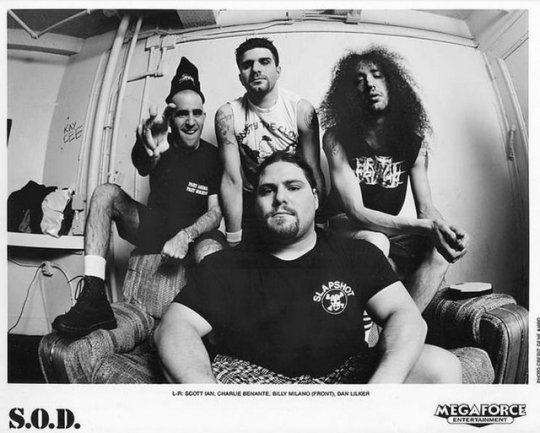
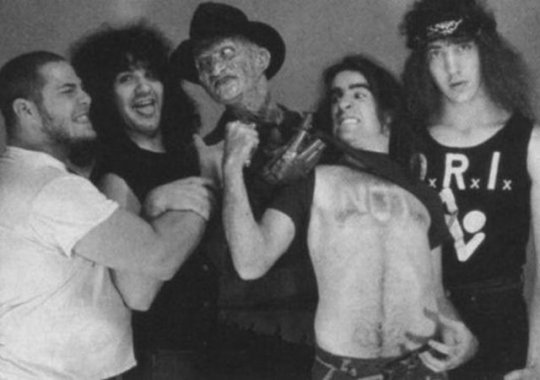
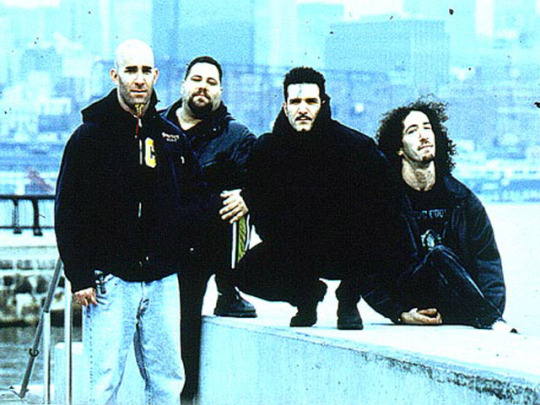
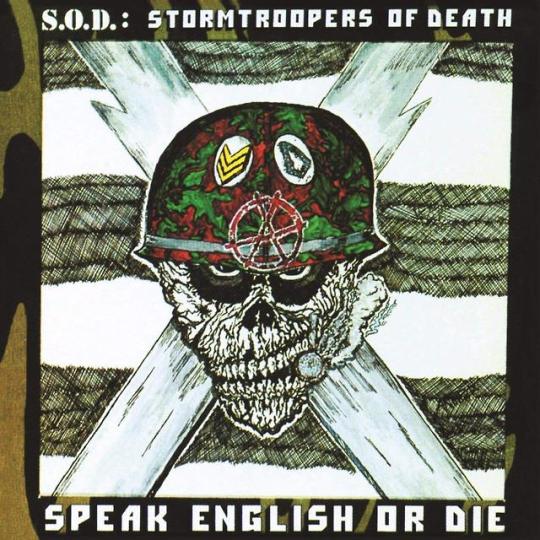
youtube
S.O.D.
1985-2001
“S.O.D. (Stormtroopers of Death) started out as a something of a joke version of hardcore for members of thrash band Anthrax in 1985. Guitarist Scott Ian and drummer Charlie Benante added former Anthrax bassist Dan Lilker (then playing with Nuclear Assault) and then-roadie Billy Milano as singer for an album that produced a parody of thrash metal and hardcore that was just as good as many of the “serious” practitioners of the genre. Their debut record, Speak English or Die, had crossover appeal, and became a major influence on metal fans who had previously hated punk, convincing them to embrace the emerging thrash/hardcore scene; it went on to eventually sell over a million copies. The album did have its un-PC moments (“Fuck the Middle East,” for instance, or the title song’s anti-immigrant rant) that led some to question the extent to which the band and their fans were joking. In any event, S.O.D. continued to tour and record sporadically over the following years, and Milano often toured with his more metal-oriented band, M.O.D.”
- Brian Cogan, The Encyclopedia of Punk, (2006)
#s.o.d.#stormtroopersofdeath#harcdore#thrash#band#anthrax#1985#scottian#charliebenante#danlilker#nuclearassault#billymilano#parody#thrashmetal#genre#speakenglishordie#crossover#influence#metal#punk#fuckthemiddleeast#question#joking#tour#m.o.d.#megaforce#liveatbudokan#biggerthanthedevil#milanomosh#briancogan
3 notes
·
View notes
Photo
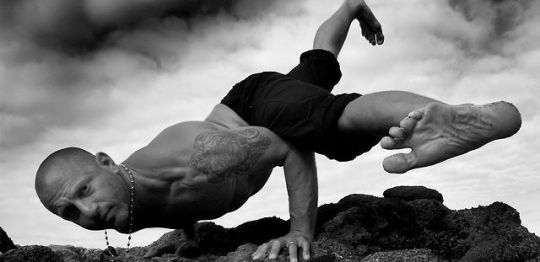
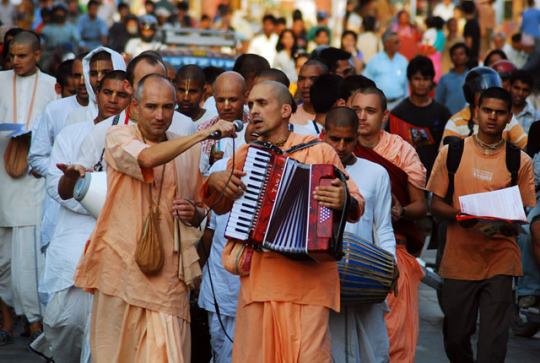
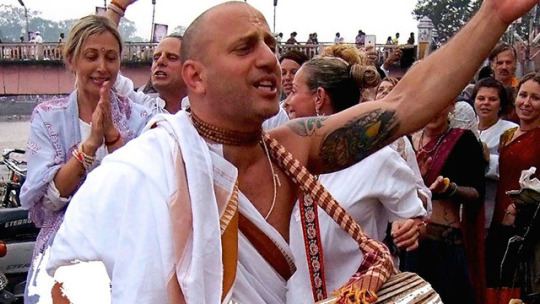
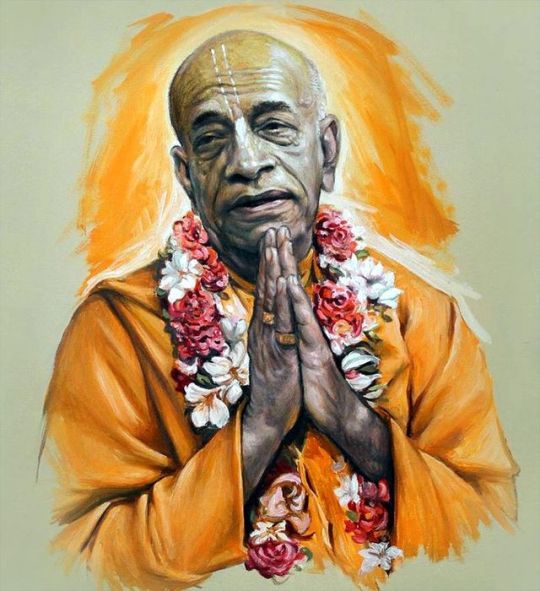
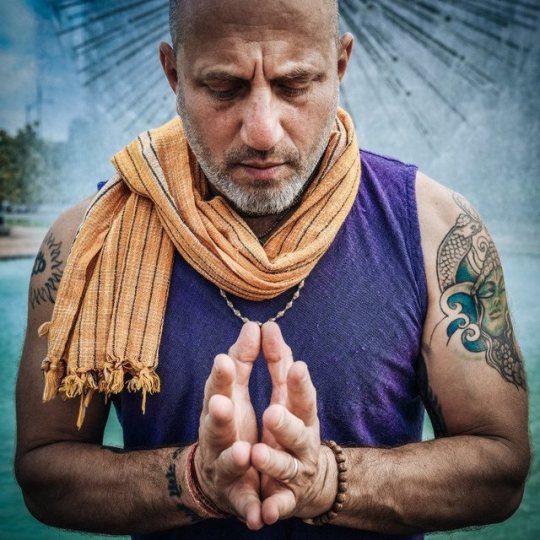
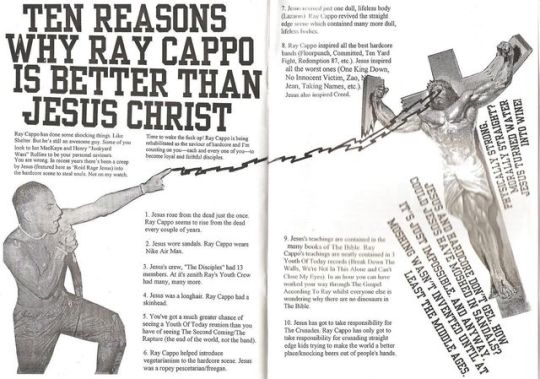
HARE KRISHNA
“Oddly enough, Hare Krishna exerted an influence on many members of New York’s hardcore scene in the 1980s and ‘90s, most notably on Ray Cappo (formerly of Youth of Today), who went on to found the Krishna-core band Shelter, and several members of the original Cro-Mags. Sometimes branded a cult, the Hare Krishna movement came to the United States in the 1960s and took root in the poor areas of many cities, including New York’s Lower East Side, where many young punks in the 1970s and ‘80s were attracted to the idea of non-Western spirituality. Most punks who embraced Krishna belong to either the International Society for Krishna Consciousness (ISKCON), the largest group working outside of India, or one of its many offshoots. The group is mostly Indian in origin, going back at least 500 years, and primarily was spread in the United States by A.C. Bhaktivedanta Swami Prabhupada, who brought the mission to the West. Krishna devotees are known for their shorn heads and chanting of the mantra “Hare Krishna, Hare Rama,” in which Hare refers to the energy from God and Rama and Krishna are two of the Sanskrit words for God.”
- Brian Cogan, The Encyclopedia of Punk, (2006)
#harekrishna#newyork#hardcore#scene#1980s#1990s#raycappo#youthoftoday#krishnacore#shelter#cromags#unitedstates#1960s#lowereastside#punk#nonwestern#spirituality#internationalsocietyforkrishnaconsciousness#iskcon#india#acbhaktivedantaswamiprabhupada#west#mantra#harerama#hare#rama#krishna#sanskrit#god#briancogan
0 notes
Photo

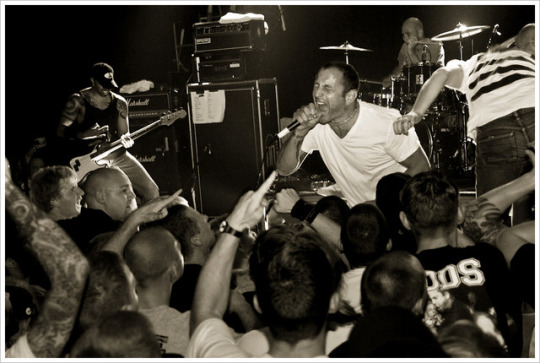
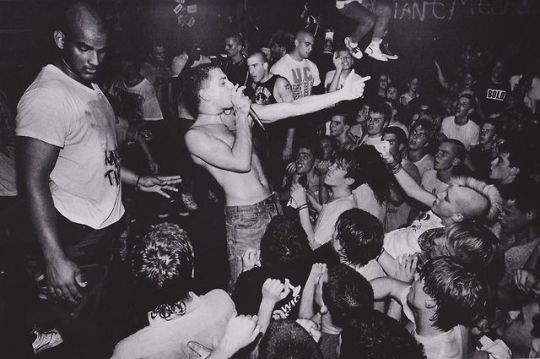
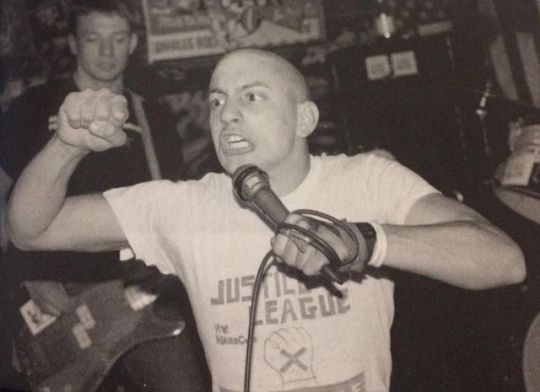
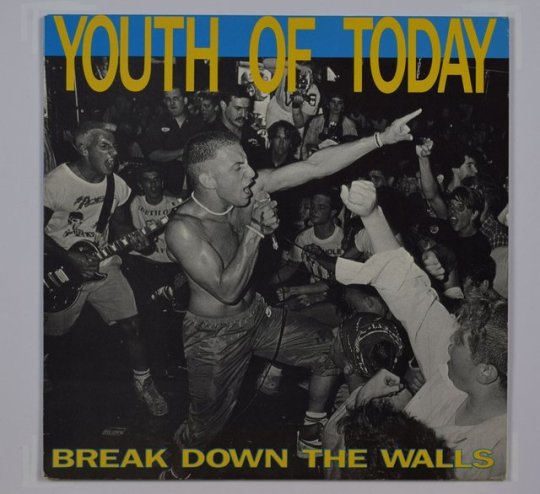
youtube
YOUTH OF TODAY
1985-1990
“Seminal New York straight-edge band Youth of Today (who are actually from Connecticut) are credited with the straight-edge movement’s rise to prominence during the mid-1980s. Youth of Today were formed by ex-Violent Children members Ray Cappo and John Porcelly. Ardent straight-edge followers, Cappo and Porcelly were highly dedicated to the original hardcore scene as epitomized by bands like 7 Seconds and Negative Approach; they would remain the core of the band through later personnel changes.
One of the earliest New York hardcore bands to tour cross-country and overseas, Youth of Today acted as a major force in spreading the gospel of straight edge and also Krishna Consciousness once Cappo became a follower. Cappo broke up Youth of Today several times as he struggled with internal personal conflicts between playing to the adulation of an audience and maintaining a spiritually pure life. Cappo, who later became known as “Ray of Today” (one of the least impressive names in punk history), settled the issue in 1990 by folding Youth of Today and creating the Krishna-core band, Shelter. There have been sporadic Youth of Today reunions, and no new recorded material, but the band is still revered as one of the most devoted and fiery of the 1980s straight-edge crew.”
- Brian Cogan, The Encyclopedia of Punk, (2006)
Essential Albums
Youth of Today - Break Down the Walls (1986)
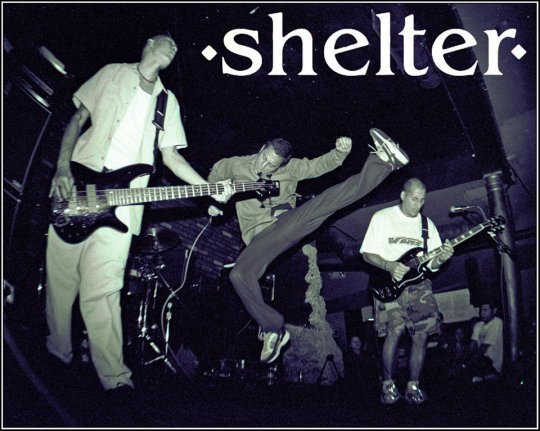
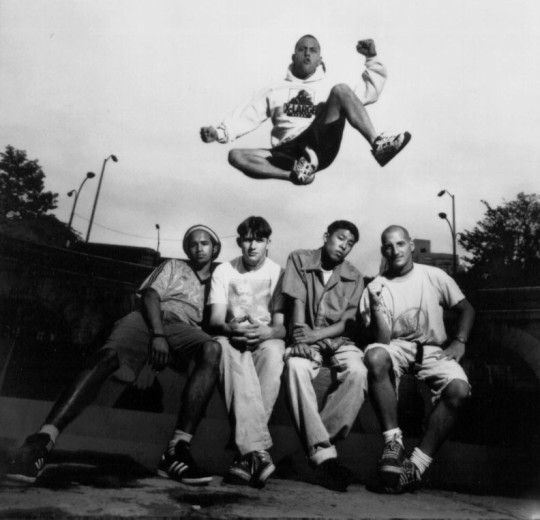
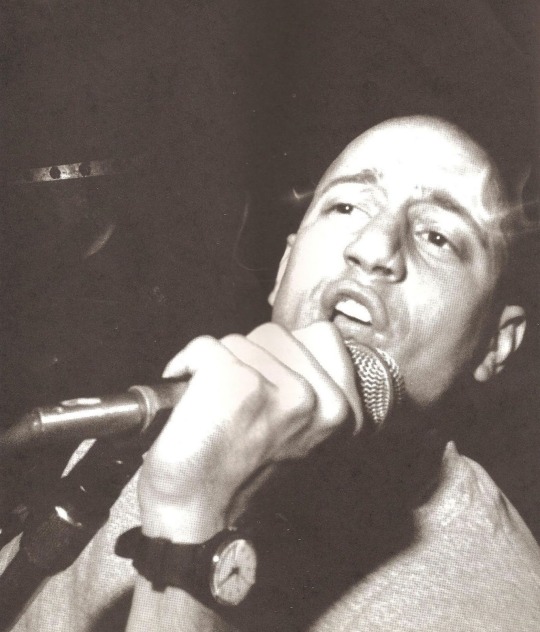
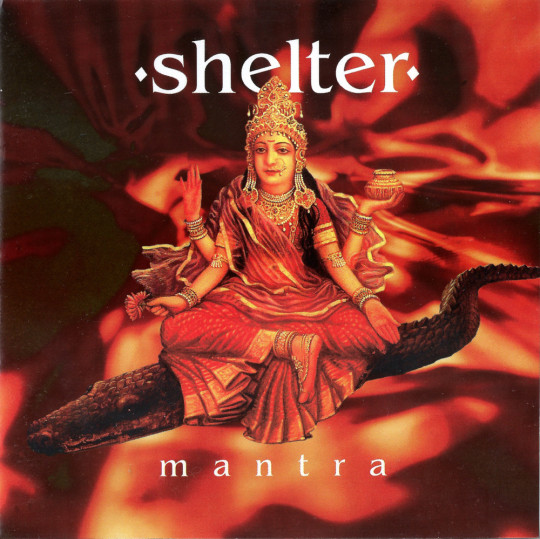
SHELTER
1990-present
“Among the more famous bands of the Krishna-core scene, Shelter was a New York group led by the formidable pair of vocalist Ray Cappo and guitarist John “Porcell” Porcelly, later of the influential straight-edge band Youth of Today. After cofounding Revelation Records, and following the breakup of Youth of Today, Cappo struggled for some time to determine if music and a spiritual life were mutually incompatible, and Shelter was the compromise in which music and spiritually were mixed with equal fervor. Cappo and Porcell’s Shelter was a natural (to them anyway) progession from Youth of Today to the doctrines of the Hare Krishna sect, with most of their lyrics reflecting their commitment to Krishna Consciousness. The band survived a close call in 1997 when touring with Beyond Planet Earth album: Their tour van went off a cliff in Colorado leaving most of the members without serious injury but extraordinarily rattled. Eventually, Porcell left the band, and Shelter went on for a while without him, calling it quits in the early-1990s for a time before the inevitable reunion. Several of the members (apparently some 42 musicians have at one time or another been part of Shelter) subsequently reunited for new albums. Cappo has worked with numerous other bands and released a few solo recordings, Porcell went on to found a record label and to record with Bold.”
- Brian Cogan, The Encyclopedia of Punk, (2006)
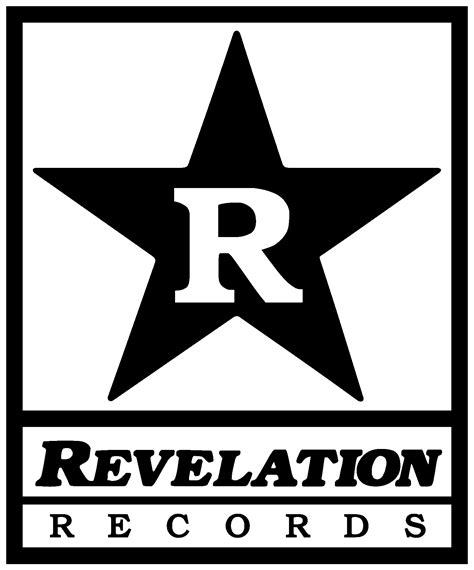
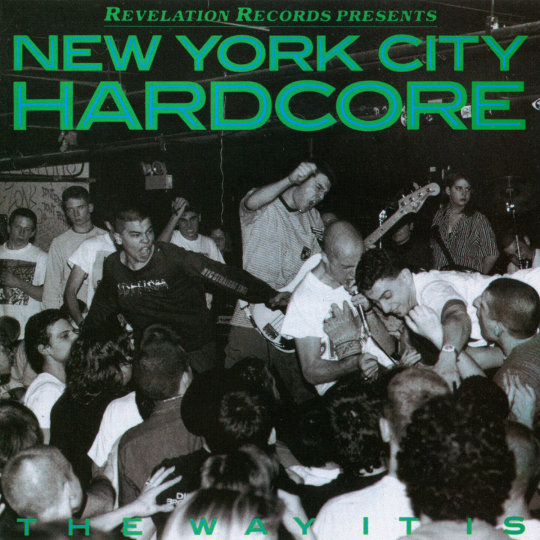
REVELATION RECORDS
LOCATION: NEW HAVEN, CONNECTICUT; HUNTINGTON BEACH, CALIFORNIA
“First started in Connecticut in 1987 by Jordan Cooper and Ray Cappo of Youth of Today, Revelation Records’ catalog certainly reflects the taste of the founders. The label began with a Warzone seven-inch single in 1987 and has since released more than 120 records by artists such as Civ, Sick of It All, Dag Nasty, Youth of Today, Bold, Supertouch, Gorilla Biscuits, Judge, and Ignite; not to mention the scene-defining compilation New York City Hardcore--The Way It Is. Although many of the records released by Revelation (especially during the early years) were by straight-edge bands, they never turned into a completely straight-edge label. Cappo left Revelation in 1988 to concentrate more on his work with Krishna Consciousness. The label later relocated to Huntington Beach, California.”
- Brian Cogan, The Encyclopedia of Punk, (2006)
http://revelationrecords.com/
#youthoftoday#newyork#straightedge#connecticut#1980s#violentchildren#raycappo#johnporcelly#hardcore#7seconds#negativeapproach#krishnaconciousness#rayoftoday#punk#spirituality#krishnacore#shelter#breakdownthewalls#revelationrecords#harekrishna#beyondplanetearth#1990s#bold#mantra#jordancooper#warzone#civ#sickofitall#dagnasty#supertouch
0 notes
Photo
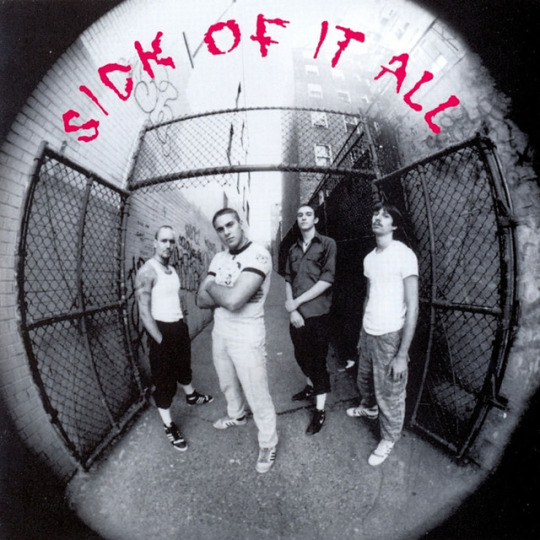
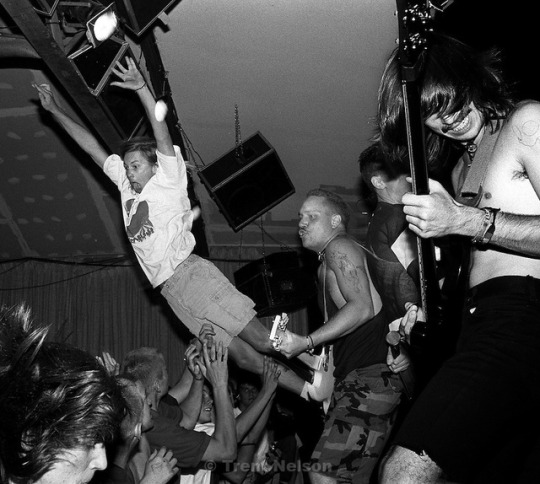
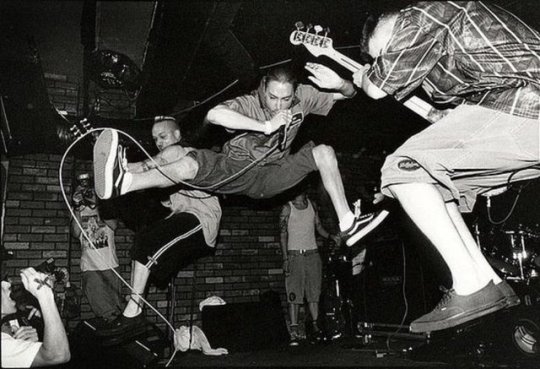
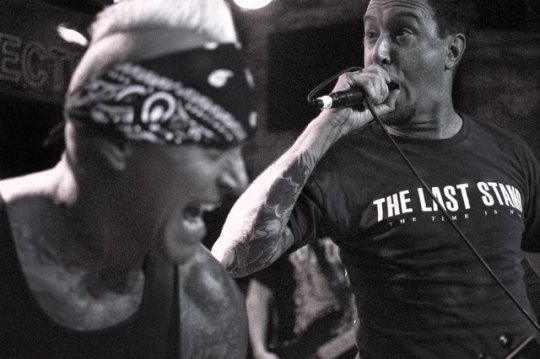
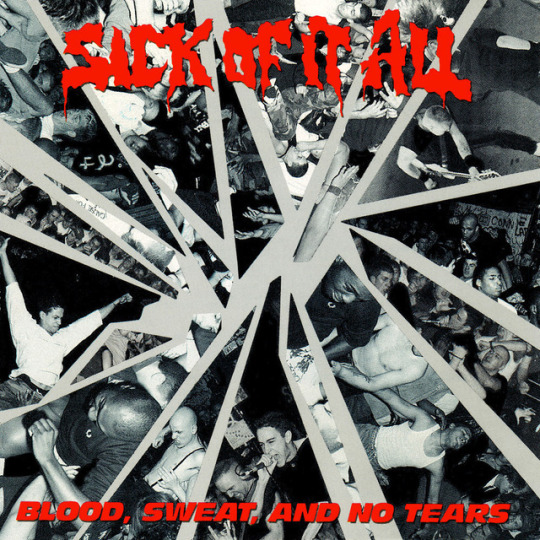
youtube
SICK OF IT ALL
1985-present
“A New York hardcore band with a ferocious, raw, and aggressive sound, Sick Of It All was founded in 1985 by brothers Lou and Pete Koller and proved a massive draw in the city’s hardcore scene during the 1980s and ‘90s due to their über-aggressive sound. The band found themselves the subject of unwanted controversy in 1992 when teenager Wayne Lo murdered several classmates at his Massachusetts prep school while wearing a Sick Of It All T-shirt. Although some in the mainstream media reported that Lo had been influenced by the band, the New York Times actually provided a forum for the band to explain why their lyrics were not about violence and that Lo had willfully misinterpreted their music’s philosophy. (A rare example of a band getting a chance to defend itself from mainstream suspicions about the links between punk and violence.) SOIA continues today as one of the flagship acts of New York hardcore.”
- Brian Cogan, The Encyclopedia of Punk, (2006)
#sickofitall#1985#queens#loukoller#petekoller#armandmajidi#newyork#hardcore#band#ferocious#raw#aggresive#city#scene#1980s#1990s#controversy#1992#waynelo#massachusetts#prep#school#newyorktimes#violence#philosophy#punk#flagship#bloodsweatandnotears#revelationrecords#westandalone
0 notes
Photo
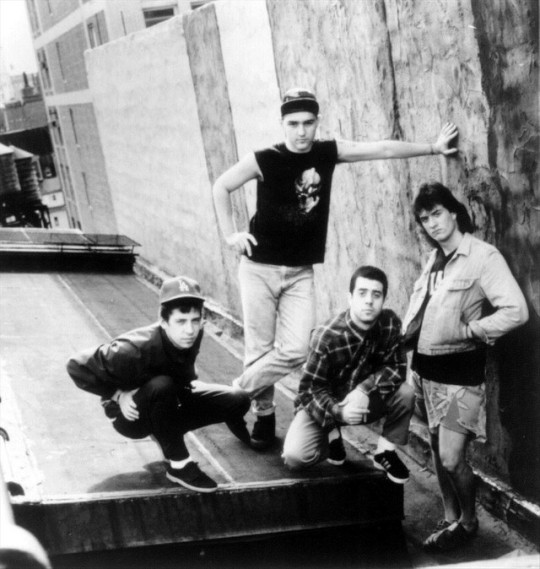
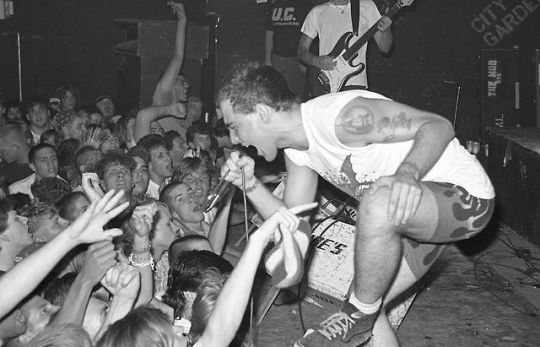
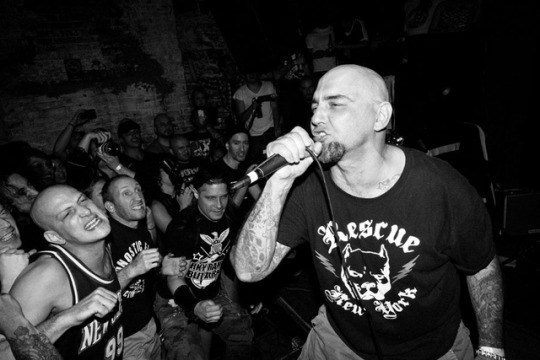
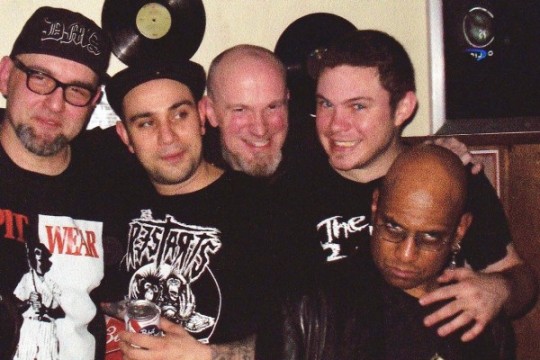
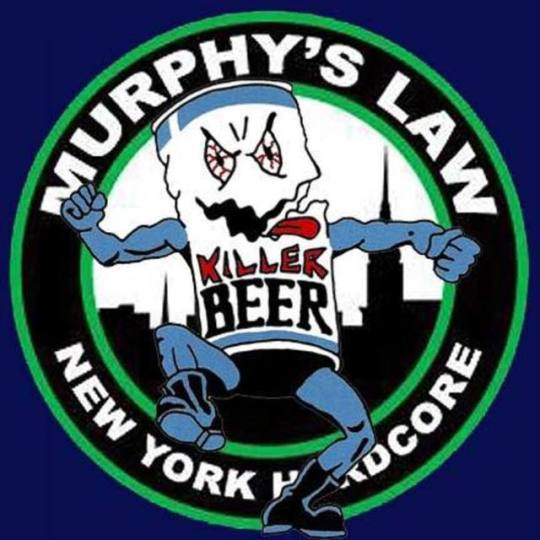
youtube
MURPHY’S LAW
1983-present
“This New York hardcore band, fronted by “Jimmy Gestapo” (Jimmy Drescher), were at the height of their popularity during the late-1980s scene but never seemed to stop touring. Murphy’s Law released their first, self-titled album in 1986 and then went on a tour with the Beastie Boys, exposing New York hardcore to mainstream audiences across the United States. Murphy’s Law was different than many on the NYHC scene of the early-to-mid-1980s; unlike bands such as Youth of Today, they were certainly not straight edge, nor did they project the air of menace that bands like the Cro-Mags did. Despite his name, Jimmy Gestapo sang about partying, having a good time, and hanging with his fellow punks on the scene, and what could be wrong with that? Although certainly a pit at at Murphy’s Law show was no less dangerous than that of any other New York hardcore band at that time. (Murphy’s Law, however, did possess a sense of humor their contemporaries mostly lacked, as in songs like “Crucial Bar-B-Q” or “Cavity Creeps,” where the band resolutely chanted “We Make Holes in Teeth!”) Problems with their record label and internal band conflict hurt Murphy’s Law chances for success, and the band went through several lineup changes until only longtime scene stalwart Jimmy Gestapo remained.”
- Brian Cogan, The Encyclopedia of Punk, (2006)
#murphyslaw#jimmygestapo#alexmorris#petemartinez#1983#newyork#hardcore#1980s#scene#tour#beastieboys#nyhc#youthoftoday#straightedge#cromags#punk#pit#cavitycreeps#wemakeholesinteeth#backwithabong#thebestoftimes#goodfornow#dedicated#thepartysover#covered#briancogan#encyclopedia#quote#2006
0 notes
Photo
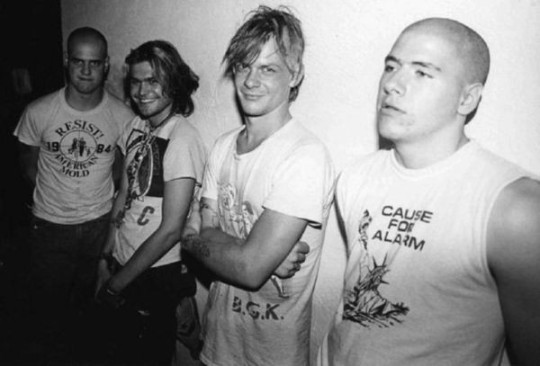
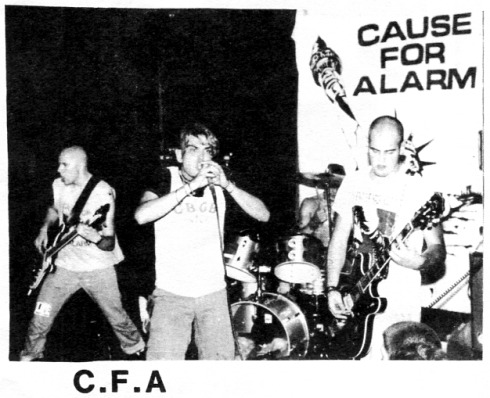
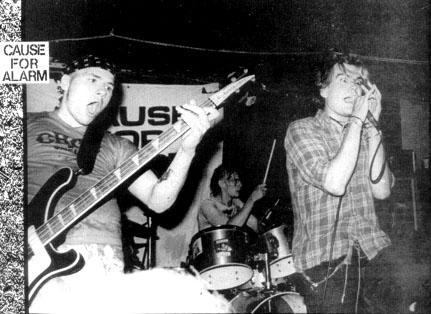
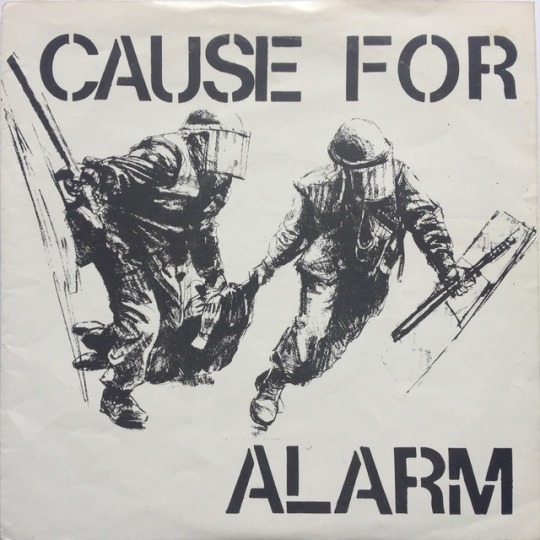
youtube
CAUSE FOR ALARM
1982-present
“One of the more positive bands in the New York hardcore scene of the mid-1980s, Cause for Alarm eventually became adherents of the Hare Krishna mantra, along with other like-minded bands such as Youth of Today and Shelter. While many groups talked a lot about the scene and the need for unity, Cause for Alarm seemed to actually care about it. Although the band never had as much success as similar bands, such as Bold, they still remain popular in New York and continue to play out live, albeit infrequently. Singer Keith Burkhardt remains one of the most arresting hardcore punk front men on the New York scene.”
- Brian Cogan, The Encyclopedia of Punk, (2006)
#causeforalarm#1982#newyork#hardcore#1980s#harekrishna#youthoftoday#shelter#scene#unity#bold#punk#beyondbirthanddeath#cheatersandthecheated#birthafterbirth#beneaththewheel#nothingeverdies#victory#records#briancogan#encyclopedia#quote#2006
0 notes
Photo
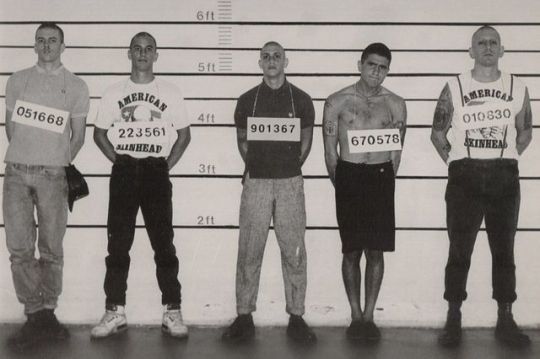
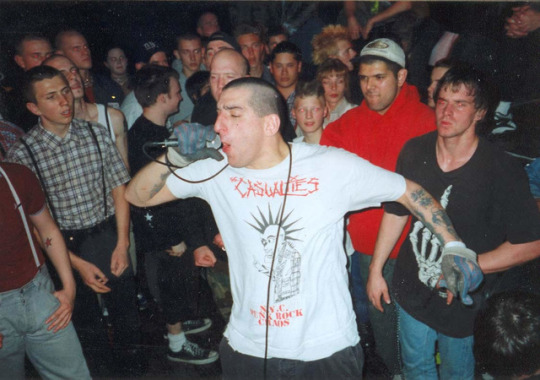
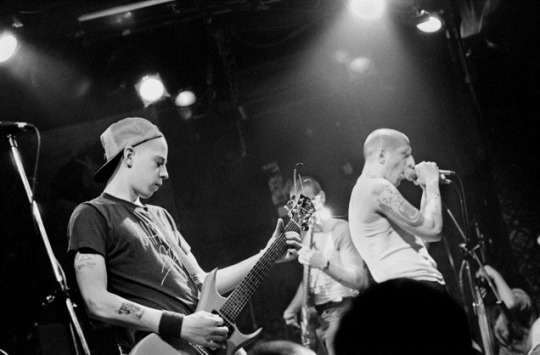
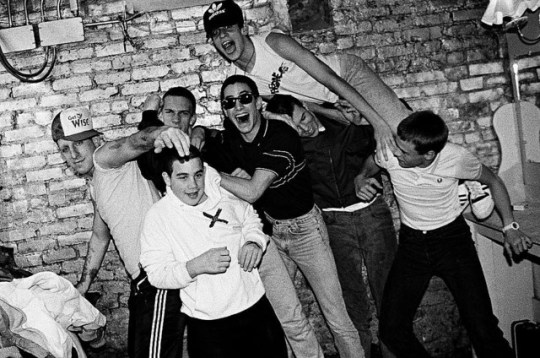
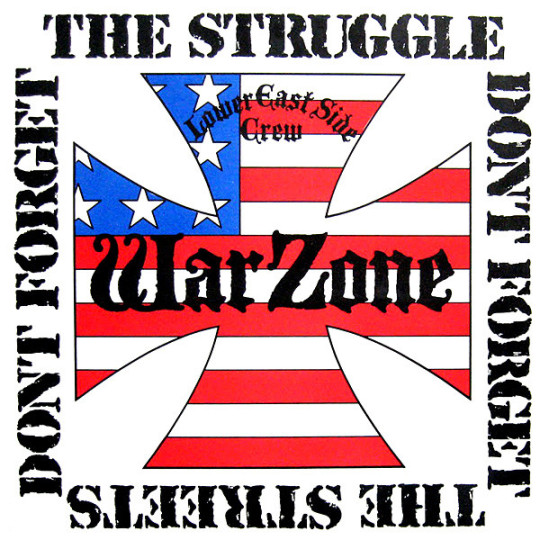
WARZONE
1982-1997
“Among the most electrifying hardcore bands on the New York scene in the 1980s and ‘90s, Warzone went through numerous personnel changes in their early years before recording their seminal first album, Don’t Forget the Struggle, Don’t Forget the Streets. The album’s title became the band’s defining slogan; Warzone and singer Raybeez (Barbieri) are best known for opposing the corporatization of hardcore music (in which Raybeez admonished the kids to “keep the faith,” despite the many temptations of corporate rock). Warzone played a confrontational brand of hardcore that became more militant as the band (some of whom were not consistent in their commitment) went straight-edge in the mid-1980s. After a decade and a half of leading the band, Raybeez died of pneumonia in 1997, ending a long and prolific career as an elder statesman of the local scene. Warzone disbanded after that, with guitarist Todd the Kid going on to join Murphy’s Law, Chrome Locust, and punk-metal band Danzig, while drummer Vinny Value later played in Grey Value.”
- Brian Cogan, The Encyclopedia of Punk, (2006)
Essential Albums
Warzone - Don’t Forget the Struggle, Don’t Forget the Streets (1987)
#warzone#raybeez#jsin#vinnyvalue#hardcore#newyork#scene#1980s#1990s#dontforgetthestruggledontforgetthestreets#slogan#keepthefaith#corporate#rock#straightedge#pneumonia#murphyslaw#punk#metal#danzig#greyvalue#briancogan#encyclopedia#quote#2006
0 notes
Photo
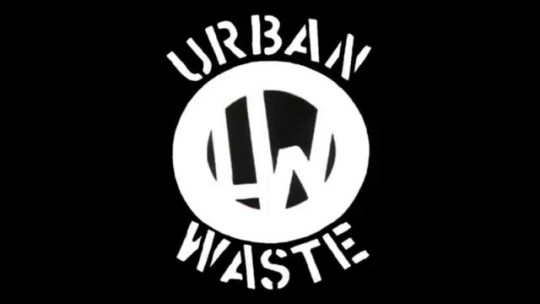
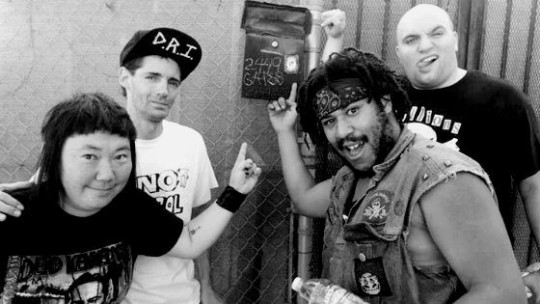
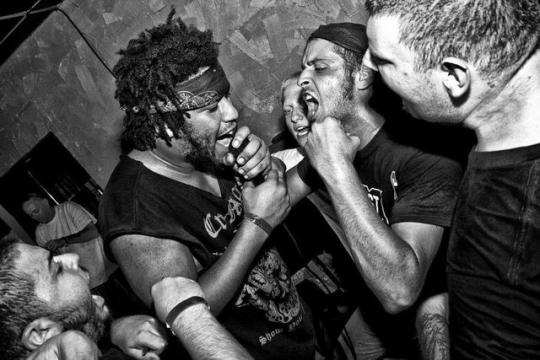
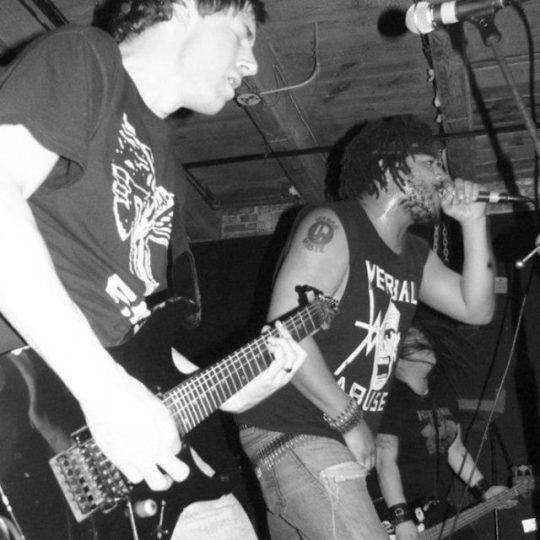
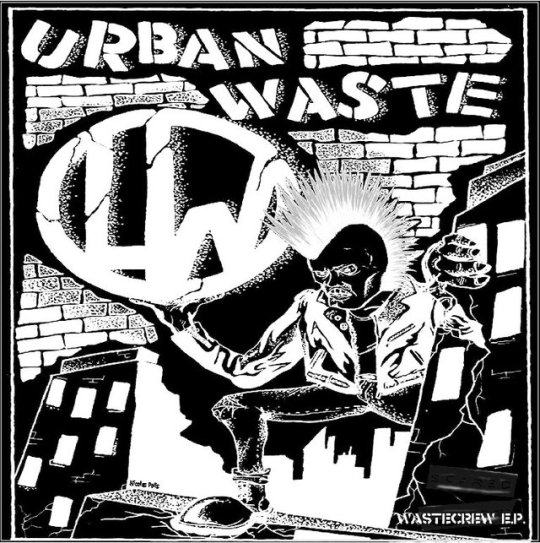
URBAN WASTE
1981-1983
“One of the best early-1980s New York hardcore bands, Queens’ Urban Waste played their first show at the legendary and long-since-closed A7 club in February 1982. The band members were tightly woven into the city’s scene, hanging around with members of Bad Brains and Kraut, while bassist Andy Apathy was briefly a member of Reagan Youth. Singer Billy Phillips, guitarist Johnny Waste and drummer Johnny “Feedback” Dancy also formed Major Conflict. Urban Waste’s only release was a self-titled seven-inch single; while not well known, this lone record is one of the most important early New York hardcore records, before the scene coalesced around the straight-edge movement.”
- Brian Cogan, The Encyclopedia of Punk, (2006)
#urbanwaste#billyphillips#kennyahrens#johnkelly#johnnyfeedback#punk#scene#1980s#newyork#hardcore#queens#a7#club#badbrains#kraut#reaganyouth#majorconflict#straightedge#movement#briancogan#encyclopedia#quote#2006
0 notes
Photo
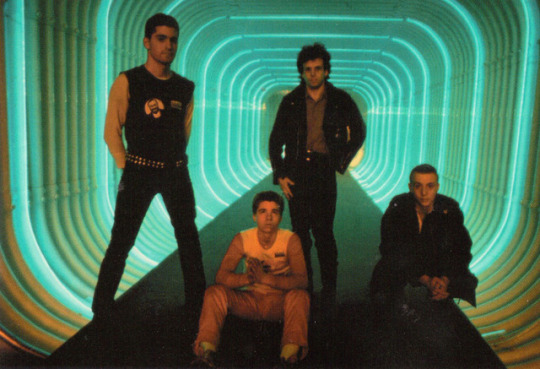
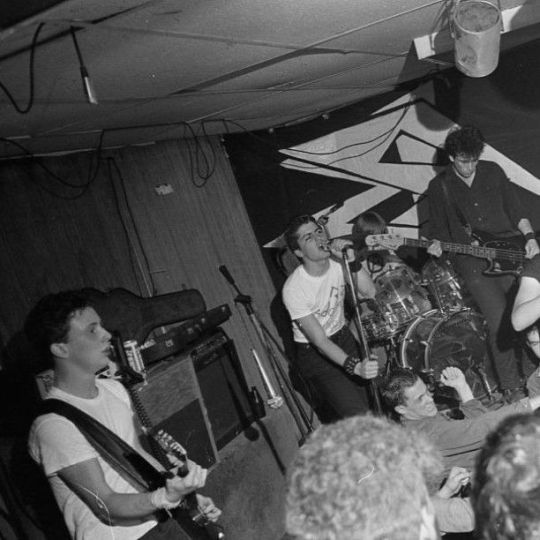
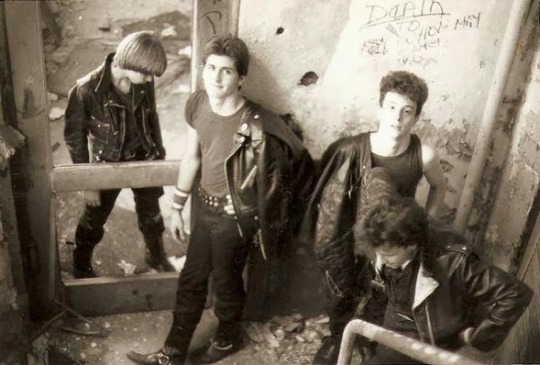
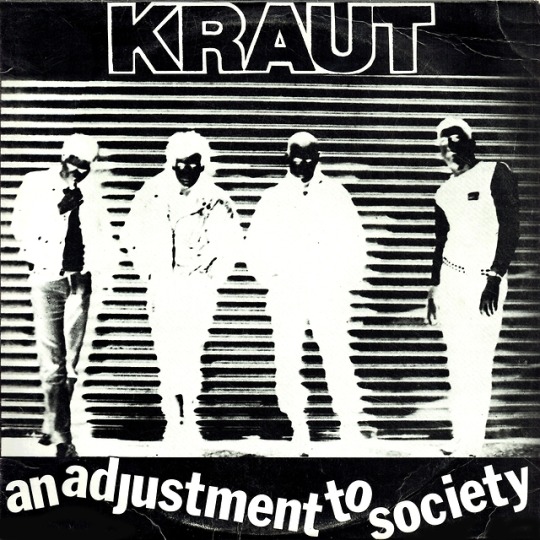
youtube
KRAUT
1981-1985, sporadic reunions
“Early New York hardcore band Kraut played a critical role in the metamorphosis of the local scene from punk to hardcore. They got their first gig opening for the Clash during their legendary series of shows at Bond’s Casino in the hot, wet summer of 1981 by sending a demo tape to the band on a whim. Although young at the time (drummer “Johnny Feedback” was only 13 in 1981), Kraut quickly became fixtures on the New York scene, releasing the popular “Kill for Cash” single later that year. Kraut were one of the first New York bands to speed up their sound like their contemporaries Bad Brains, while keeping the melodic feel of punk. In 1983, Kraut scored a couple of rare feats for a punk band: first getting former Sex Pistol Steve Jones to play on their debut album, and even more astoundingly landing in rotation on the nascent MTV network with their video for “All Twisted.” As was common in the 1980s, Kraut later began to slow down and add more metallic solos to their sound. Guitarist Doug Holland left not long after to the join the Cro-Mags and was replaced by Chris Smith from Battalion of Saints. The band broke up after Smith died in a tragic drowning; Feedback and Gunner went on to form Gutterboy. Kraut reunited for shows in 1991, 2001, and 2002.”
- Brian Cogan, The Encyclopedia of Punk, (2006)
#kraut#daveygunner#dougholland#chrissmith#johnnyfeedback#newyork#hardcore#scene#punk#theclash#bondscasino#1981#killforcash#badbrains#melodic#sexpistols#stevejones#mtv#network#alltwisted#1980s#metallic#cromags#battalionofsaints#gutterboy#briancogan#encyclopedia#quote#2006
0 notes
Photo
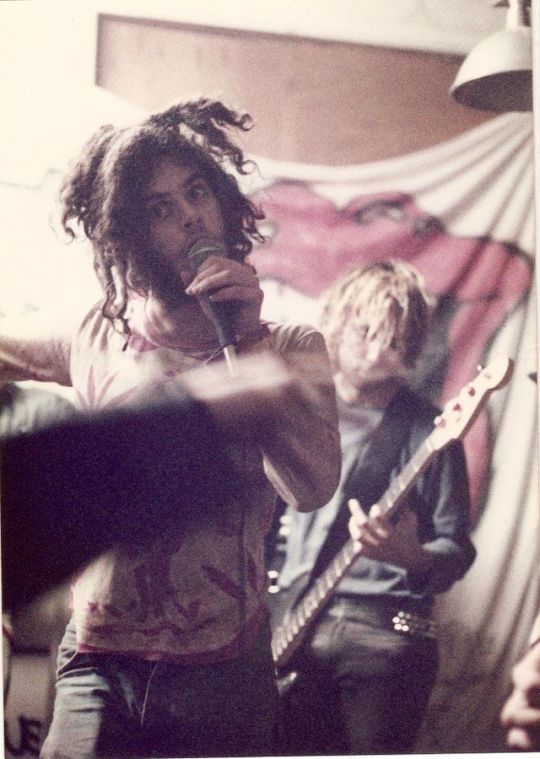
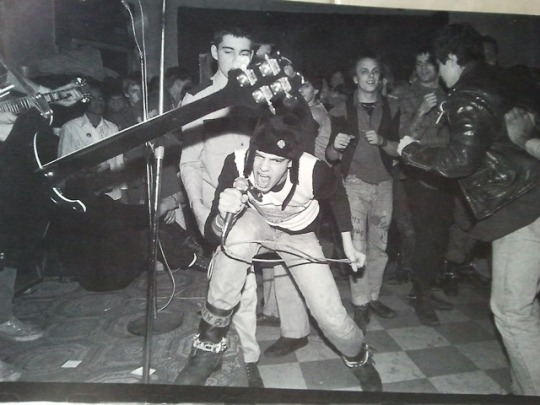
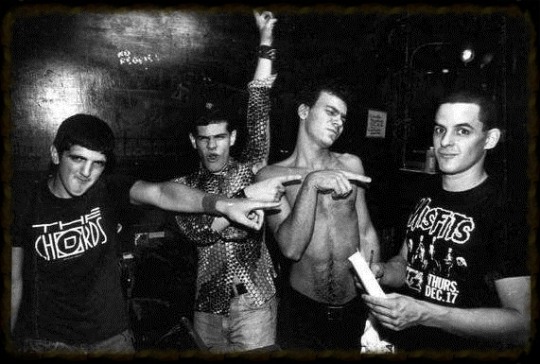
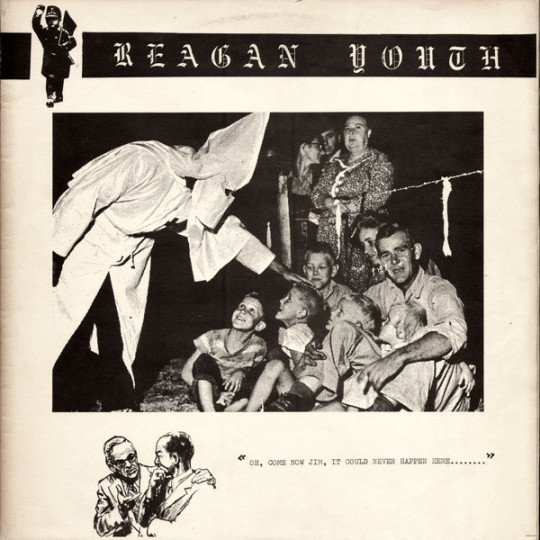
youtube
REAGAN YOUTH
1980-1989, 2007-present
“Your quintessential New York hardcore, anarchist crust-punk band, Reagan Youth really, really couldn’t stand the president. Singer Dave Insurgent (Dave Rubinstein) and guitarist Paul Cripple (Paul Bakija) started the band while still in high school, quickly making their mark on the scene alongside bands such as Agnostic Front and the Cro-Mags, with whom they played many Sunday afternoon CBGB hardcore matinees during the 1980s. In all the years they were together, Reagan Youth only released one album, possibly as a result of some of the members’ drug addictions. The band broke up in the late-1980s after their nemesis Ronald Reagan left office and the band’s name became obsolete. Various members played together in loose aggregations after the band’s demise but never had the level of success enjoyed by Reagan Youth. Rubinstein fell prey to drug addiction along with his prostitute girlfriend Tiffany Bresciani. In 1993, after his mother died in a car accident and Tiffany was murdered by Long Island serial killer Joel Rifkin, Rubinstein subsequently committed suicide. Rubinstein’s friend Jesse Malin later formed D Generation, who often closed their shows playing the Reagan Youth song “Degenerated,” and dedicating it to Rubinstein. Bassist Al Pike later played in the post-Misfits band Samhain. In 2007, Reagan Youth regrouped without Insurgent and toured again with new vocalist Pat Distraction.”
- Brian Cogan, The Encyclopedia of Punk, (2006)
#reaganyouth#daveinsurgent#paulcripple#alpike#vicvenom#charleytripper#thesteve#johnnyaztec#newyork#hardcore#anarchist#crust#punk#president#agnosticfront#cromags#matinees#1980s#ronaldreagan#joelrifkin#suicide#dgeneration#degenerated#misfits#samhain#briancogan#encyclopedia#quote#2006
0 notes
Photo
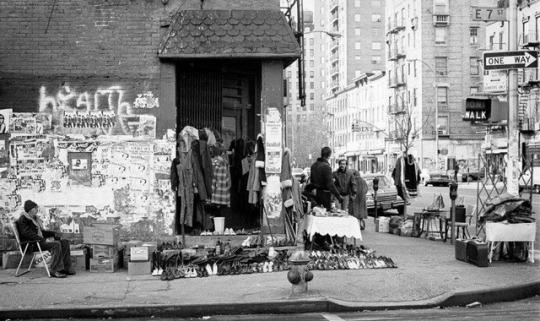
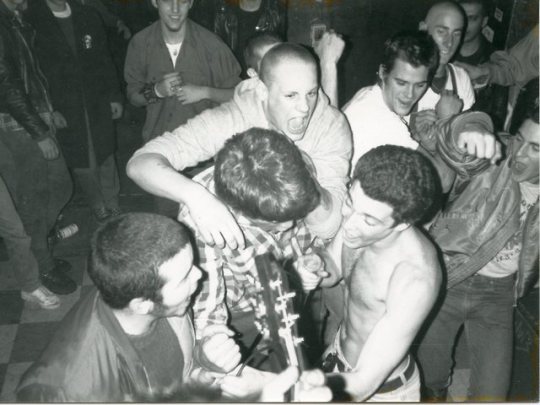

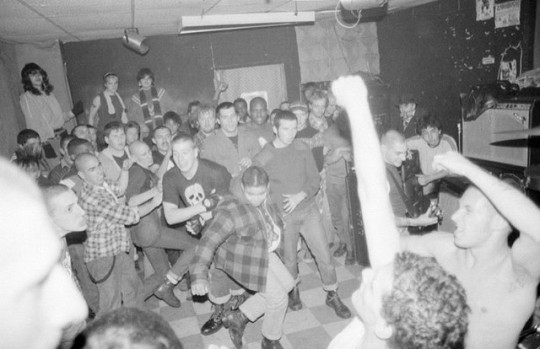
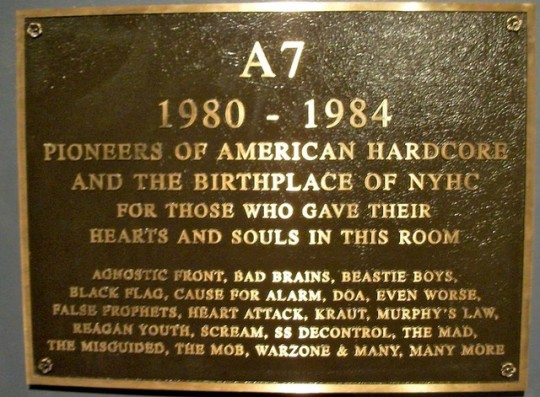
A7
LOCATION: NEW YORK
“During the early days of hardcore in New York City, the A7 club played host to numerous bands (Bad Brains played many of their earliest shows in the city here) and was a frequent gathering place for many of the often-underage punks who populated New York’s East Village and Lower East Side during the early 1980s. The club was also occasionally known for drug use and violence due to the large population of homeless punks who lived in nearby Tompkins Square Park. The club closed for good during the mid-1980s, and the neighborhood has changed so drastically since then that the punk community has almost completely left the area (except for the holdouts in Tompkins Square Park).”
- Brian Cogan, The Encyclopedia of Punk, (2006)
#a7#club#newyork#hardcore#newyorkcity#badbrains#shows#city#underage#punks#eastvillage#lowereastside#1980s#druguse#violence#homeless#tompkinssquarepark#neighborhood#community#closed#briancogan#encyclopedia#quote
18 notes
·
View notes
Photo
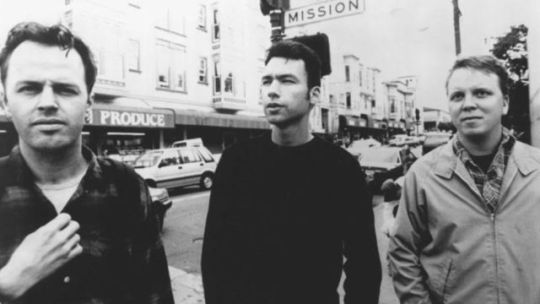
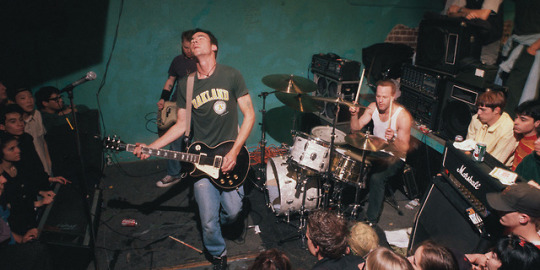
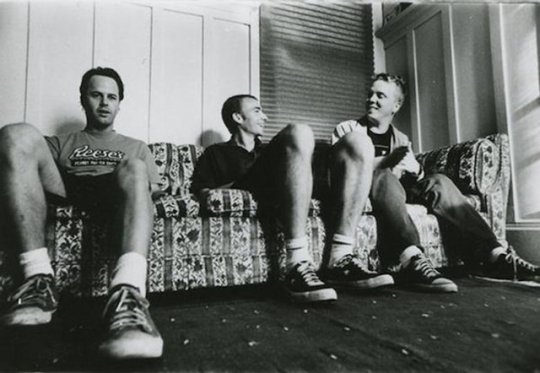
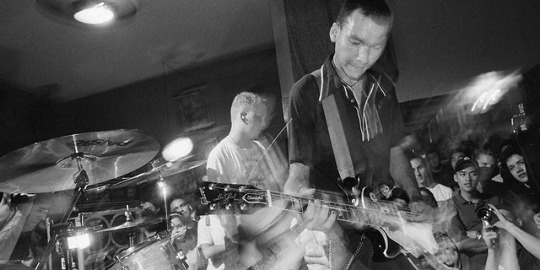
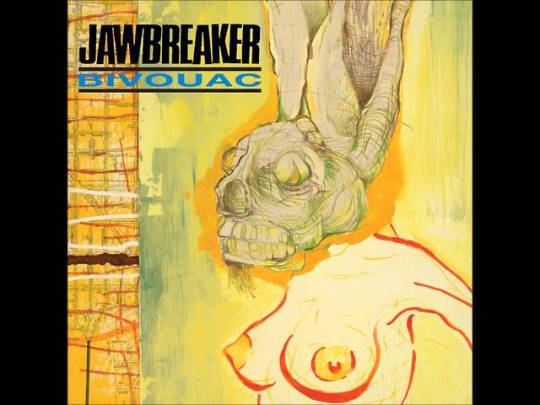
JAWBREAKER
1988-1996, 2017-present
“Jawbreaker’s lead singer Blake Schwarzenbach didn’t just wear his heart on his sleeve, he used that sleeve to dry the many tears he cried during the many, many great Jawbreaker songs about lost love and missed chances. The Berkeley-based band with roots in New York (they formed after meeting as students at NYU) helped serve as a template for much of the early-1990s punk scene, which was greatly in need of inspiration. Along with Jawbox, Jawbreaker slowed down the hardcore beat, but kept its intensity and raw guitar sound, while lyrically inspiring a new generation (who had evidently missed the memo about Dag Nasty and Rites of Spring) to write short and emotive songs. That the modern and decidedly non-punk emo movement is influenced by Jawbreaker is no reason to avoid them, however, as their music is miles better both lyrically and musically than later emo imitators like Saves the Day and Jimmy Eat World.
Jawbreaker’s sound was marked by an extremely tight and constantly shifting, stop-and-start musical approach, created by Schwarzenbach’s scratchy, distinctive vocals and the ultra tight rhythm section of bassist Chris Bauermeister and drummer Adam Pfahler. Their first two records, Unfun and Bivouac, were extremely influential, as Schwarzenbach’s highly personal lyrics addressed issues of loss and authenticity with a candor rarely seen in the punk scene. Their breakthrough record, 24 Hour Revenge Therapy (1994), established Jawbreaker as one of the most important punk bands of the 1990s, alongside Fugazi, and added a new dimension of sophisticated pop on songs such as “The Boat Dreams from the Hill” and “Do You Still Hate Me?” Jawbreaker was signed to DGC Records in the post-Green Day years and released one more album, the underrated but criminally overproduced Dear You, before calling it quits in 1996. After Jawbreaker’s demise, Schwarzenbach formed the stranger but compelling Jets to Brazil, and began teaching writing at Hunter College in New York after that band broke up.”
- Brian Cogan, The Encyclopedia of Punk, (2006)
Essential Albums
Jawbreaker - Bivouac (1992)
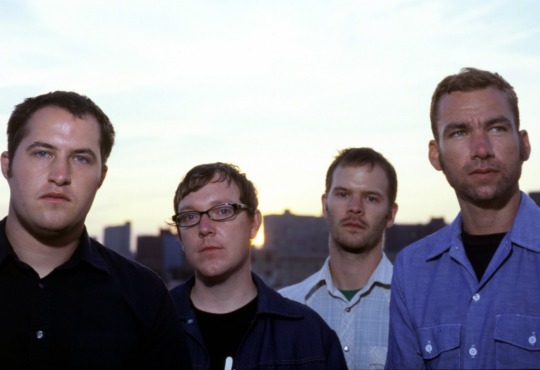
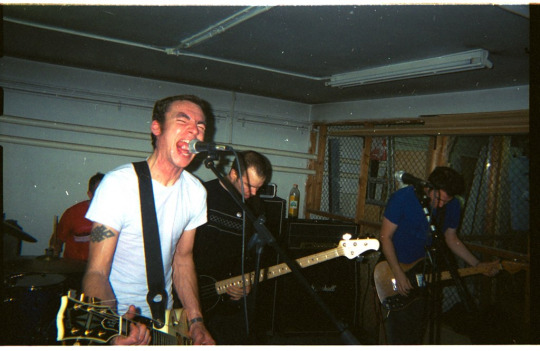
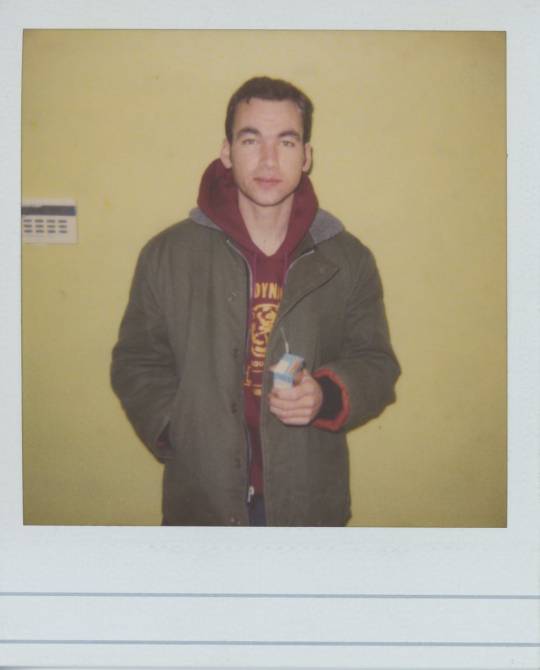
youtube
JETS TO BRAZIL
1997-2003
“A melodic punk band started by Blake Schwarzenbach after the demise of the much-beloved Jawbreaker, Jets to Brazil was a sort of latter-day hardcore supergroup. The band was, however, firmly under Schwarzenbach’s vision, featuring him on lead vocals, guitar, and keyboards. Jets to Brazil can be seen as a natural extension of where Jawbreaker was going before their dissolution. Schwarzenbach’s voice is in fine form, and although intricate, the guitar and bass lines are more straight forward pop than those of Jawbreaker, leaving lots of room for effects and even the occasional keyboard part. In 2003 the band disbanded without a major announcement and Schwarzenbach went back to teaching writing.”
- Brian Cogan, The Encyclopedia of Punk, (2006)
#jawbreaker#blakeschwarzenbach#berkeley#roots#newyork#newyorkuniversity#nyu#1990s#punk#scene#inspiration#jawbox#hardcore#beat#intensity#raw#guitar#sound#new#generation#dagnasty#ritesofspring#emo#music#savestheday#jimmyeatworld#unfun#bivouac#24hourrevengetherapy#fugazi
1 note
·
View note